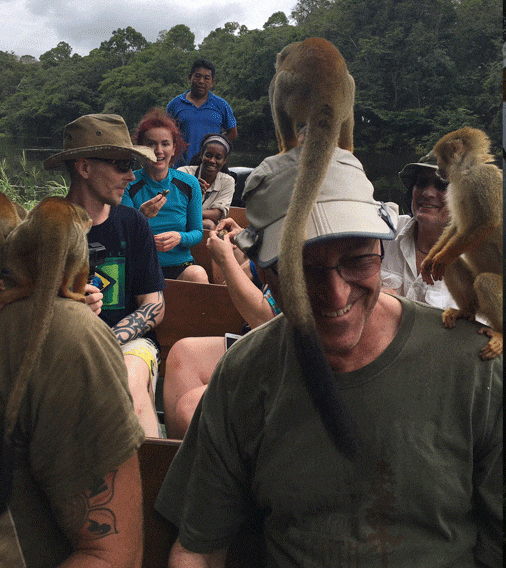What I Learned in the Amazon Rainforest
I reached up, clasped the rope with both hands, and winched myself the final few feet to the top. The muscles in my shoulders and arms burned with the effort, but I’d succeeded. I’d climbed 150 feet to the crown of one of the over 390 billion trees that grow in the Amazon rainforest.
At 150 feet, I was above the jungle canopy. Below me, the mahogany colored Rio Negro cut through an ocean of green. The rainforest was alive with the sounds of over 1,000 species of birds, and here and there it moved with the weight of monkeys swinging from branch to branch. Up there in the tree, I felt like an integral part of the jungle instead of just an observer. I was one with the trees, and the birds, and the soft, warm air.
Then, as I looked down at my feet, the thought struck me: I was dangling from a pretty thin rope strung over the branch of a tree, 150 feet in the air. What if something happened to the rope, or the branch, or me? I was vulnerable in the extreme. That’s when I realized just how much I depended on our guide, Samuel.
I wasn’t a novice tree climber. I’d taken classes and climbed California Redwoods before my wife and I went on our tree climbing adventure in Brazil. But the rainforest was a completely new environment—unknown, uncharted territory. Samuel was our indigenous guide to this new world.
Samuel is five-foot-six, dark-haired, with big smiling eyes. He grew up a “six days walk” from where we were sailing on the Rio Negro, and he was an expert in the ways of the jungle. He never wore shoes, but he knew how to operate in his environment, how to protect himself, and us, from danger. When we were looking for a tree to climb, he would go ahead of us and clear away obvious obstacles. I remember one hike in particular, when he suddenly held out his hands for us to stop. We couldn’t see it until he pointed it out, but there was a black and silver Fer de Lance, one of the most venomous snakes in the world, coiled in the undergrowth just ahead of us. That walk in the jungle could have been lethal were it not for Samuel.
Samuel didn’t just protect us. Every day, he brought us adventures beyond our imagining. Before we embarked on an adventure, he gave us as much information as we needed to make an informed choice about whether we wanted to go with him, or stay on the boat. It was ok to say no, but when we said yes, he took us deep into the jungle, up towering trees, took us swimming with pink river dolphins, introduced us to spiders as big as dinner plates, and geological formations other people never get to see. He persuaded monkeys to eat bananas with us. He caught an alligator with his bare hands, and brought a sloth down from a tree so we could see it.
I thought about Samuel all the way back to California. In many ways, leading a tree climbing expedition is much like designing and building an accessory dwelling unit or ADU (also known as granny flats or in-law suites). For most people, buying an ADU is a one-off adventure into unknown territory. The pitfalls are many—from engineering and design issues to navigating ever-changing regulations. Mistakes can be financially costly. Mistakes can also result in an ADU that doesn’t meet the buyer’s needs.
Like Samuel, a specialist in the world of ADUs knows their territory. They not only provide the information an ADU buyer need to make informed choices, they protect the buyer against often unseen and expensive pitfalls. And because they know the world of backyard homes so well, they can open a universe of options homeowners could never imagine on their own, options that, like our adventure in Brazil, exceed expectations.





